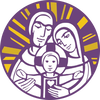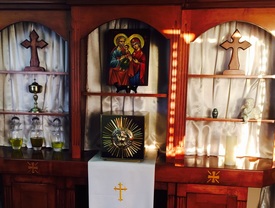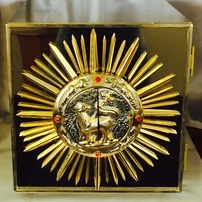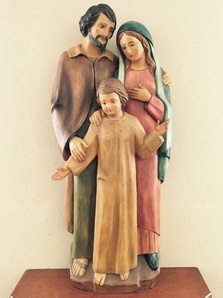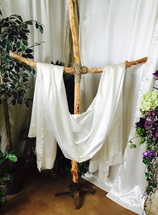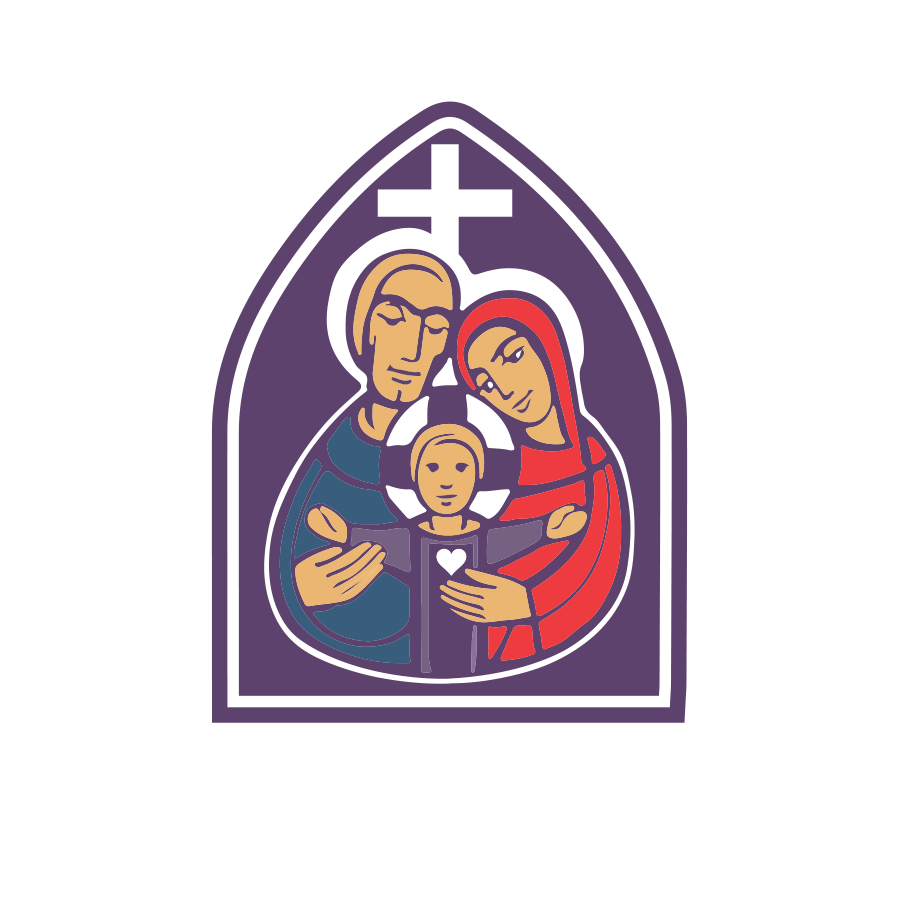Our Blessed Sacrament Chapel
Holy Family is a post-Vatican II parish, incorporating into its prayer & liturgy the reforms of the Second Vatican Council (1962-1965). Following in this tradition, we observe the recommendations of the Church’s Instruction on the Worship of the Eucharistic Mystery (1967), which suggested that the Blessed Sacrament be reserved “as far as possible…in a chapel distinct from the middle or central part of the church” and in a place “suitable for private prayer, so that the faithful may easily and fruitfully, by private devotion also, continue to honor our Lord in this sacrament” (Eucharisticum Mysterium, 53).
In the 1960’s and 1970’s, the creation of Blessed Sacrament Chapels helped highlight the teaching of the Second Vatican Council that when the People of God gather to celebrate the sacrament of their unity, they are to be focused less on the golden box in the sanctuary and more on the real presence of Christ in the Word proclaimed, in the Eucharist celebrated, and in the presider and the people (Sacrosanctum Concilium, 7).
When you pray in our Blessed Sacrament Chapel, you will notice a number of details.
In the 1960’s and 1970’s, the creation of Blessed Sacrament Chapels helped highlight the teaching of the Second Vatican Council that when the People of God gather to celebrate the sacrament of their unity, they are to be focused less on the golden box in the sanctuary and more on the real presence of Christ in the Word proclaimed, in the Eucharist celebrated, and in the presider and the people (Sacrosanctum Concilium, 7).
When you pray in our Blessed Sacrament Chapel, you will notice a number of details.
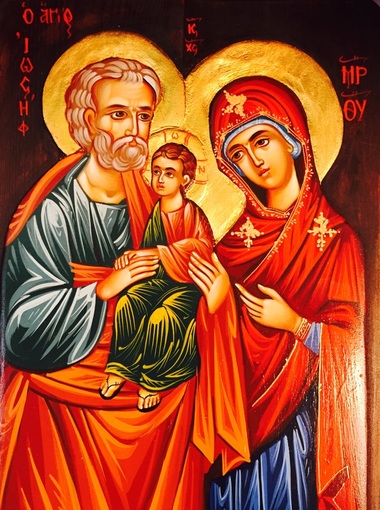
Above the tabernacle is a handpainted icon of the Holy Family from Jerusalem. This image was donated to our parish community in 2012 by an anonymous donor who, though unable to join us for prayer on a regular basis because she lives far from Austin, assures us of her constant prayers for our parish community. You'll also notice the following details about this beautiful icon:
- Historically, Jerusalem is part of the Eastern Church, where the color blue represents humanity, and the color red represents divinity. Symbolically, then, Saint Joseph (the human stepfather of Jesus) is clothed in blue, while Mary (who was declared the “Mother of God” in 431 A.D.) wears a red outer garment above a blue inner garment.
- To the left of Joseph’s head, the Greek words Ο άΓιΟς ΙωςHφ contain an intriguing mix of uppercase & lowercase Greek letters (betraying the painter’s lack of knowledge of the language) and can be translated as “Holy [or Saint] Joseph.”
- Beside Mary’s head, the uppercase Greek letters mu (M) and rho (P) are a shorthand way of writing “mother” (MHTÉP, in Greek), and the Greek letters theta (Θ) and upsilon (Υ) are an abbreviation for “of God” (ΘEOY, in Greek). In this way, rather than label the woman as “Mary,” the artist is choosing to identify her as “the Mother of God.”
- Above the Christ Child, the Greek letters Ις Χς are an abbreviation for “Jesus Christ” (Ιησούς Χριστός, in Greek).
- You will also notice that the hands of Joseph and Mary are pointing toward the Christ Child, thus drawing the viewer’s attention to their son. Similarly, our attention should be focused on Christ as the center of our lives and of our families.
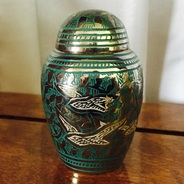
The small, silver urn on the altar contains some of the remains of the Most Reverend Lawrence J. Harms, the Presiding Archbishop of the Catholic Church in the United States from 1999 to 2012. It was Archbishop Harms who welcomed Father Jayme Mathias into the Independent Catholic movement in 2012, naming Father Jayme as pastor of Holy Family Catholic Church.
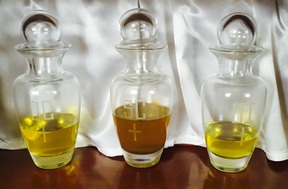
Three jars contain the holy oils that are blessed by the archbishop during the annual Chrism Mass and are used in the Church’s sacraments. The jar marked “OC” (for Oleum Catechumenorum) contains the Oil of Catechumens, which is sometimes used in the sacrament of Baptism, as part of a pre-baptismal prayer of exorcism. The jar marked “OI” (for Oleum Infirmorum) contains the Oil of the Infirm, which is used in the sacrament of Anointing of the Sick. The jar marked “SC” (for Sacrum Chrisma) contains the Sacred Chrism, which is used in the sacraments of Baptism, Confirmation and Holy Orders, as well as in the dedication of churches and altars. Sacred Chrism is darker in color because it is a mixture of olive oil and balsam, an aromatic resin.
